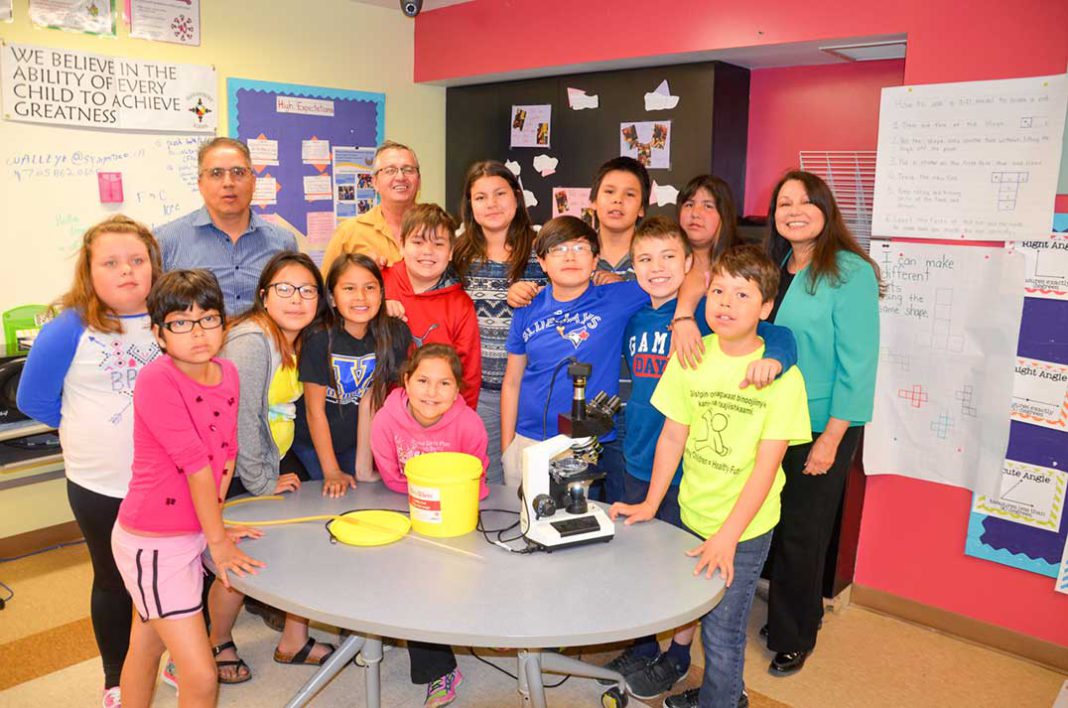BIRCH ISLAND—Teachers and students gathered around the microscope taking turns observing developing walleye fry up close and personal as they learn the importance of conservation, the Seven Grandfather teachings and the importance of preserving a resource for the next seven generations.
The Children’s Micro Hatchery Project is a collaboration between Waubetek Business Services’ Aboriginal Fisheries Strategy and the United Walleye Clubs, with funding provided by Aboriginal Aquaculture in Canada Initiative and the Canadian Department of Oceans and Fisheries.
“We are starting with four (classroom incubator systems) and are hoping to expand it,” said Waubetek General Manager Dawn Madahbee. “The project hopes to combine fisheries and conservation with the grandfather teachings, not only passing on traditional values but utilizing modern technology, environmental issues and the impact of conservation on the land.”
United Walleye Clubs volunteer Rolly Frappier has been engaged in the classroom hatchery project for several years. “This is my passion,” he admits, smiling as he watches the students’ excitement as they observe the fish fry under the lens. “This is what makes it all worthwhile for me.”
The students of Shawnna Smith’s Grade 5/6 classroom were totally engrossed in the workings of the mini-hatchery and the developing fry.
Ms. Madahbee noted the Aboriginal Fisheries Strategy for the region was developed at the request of the First Nations in Northeastern Ontario to identify “potential business opportunities in recreational and commercial fisheries as well as aquaculture.”
On the aquaculture component, explained Ms. Madahbee, “Waubetek has partnered with the Department of Fisheries and Oceans to be the lead organization for an aquaculture initiative in Central Canada covering Ontario, Manitoba and Saskatchewan.” She went on to explain that a fisheries asset mapping document has been completed for use by the First Nations in Northeastern Ontario.
The strategy seeks to “Develop capacity in commercial fisheries, aquaculture, recreational fisheries, processing and marketing; provide access to capital and infrastructure to support fisheries and aquaculture development; access to objective information to identify, explore and develop potential opportunities in sustainable fisheries and aquaculture development; identify and deliver training and skills development programming; and enhance First Nations autonomy regarding fisheries management in traditional aboriginal territories.”



